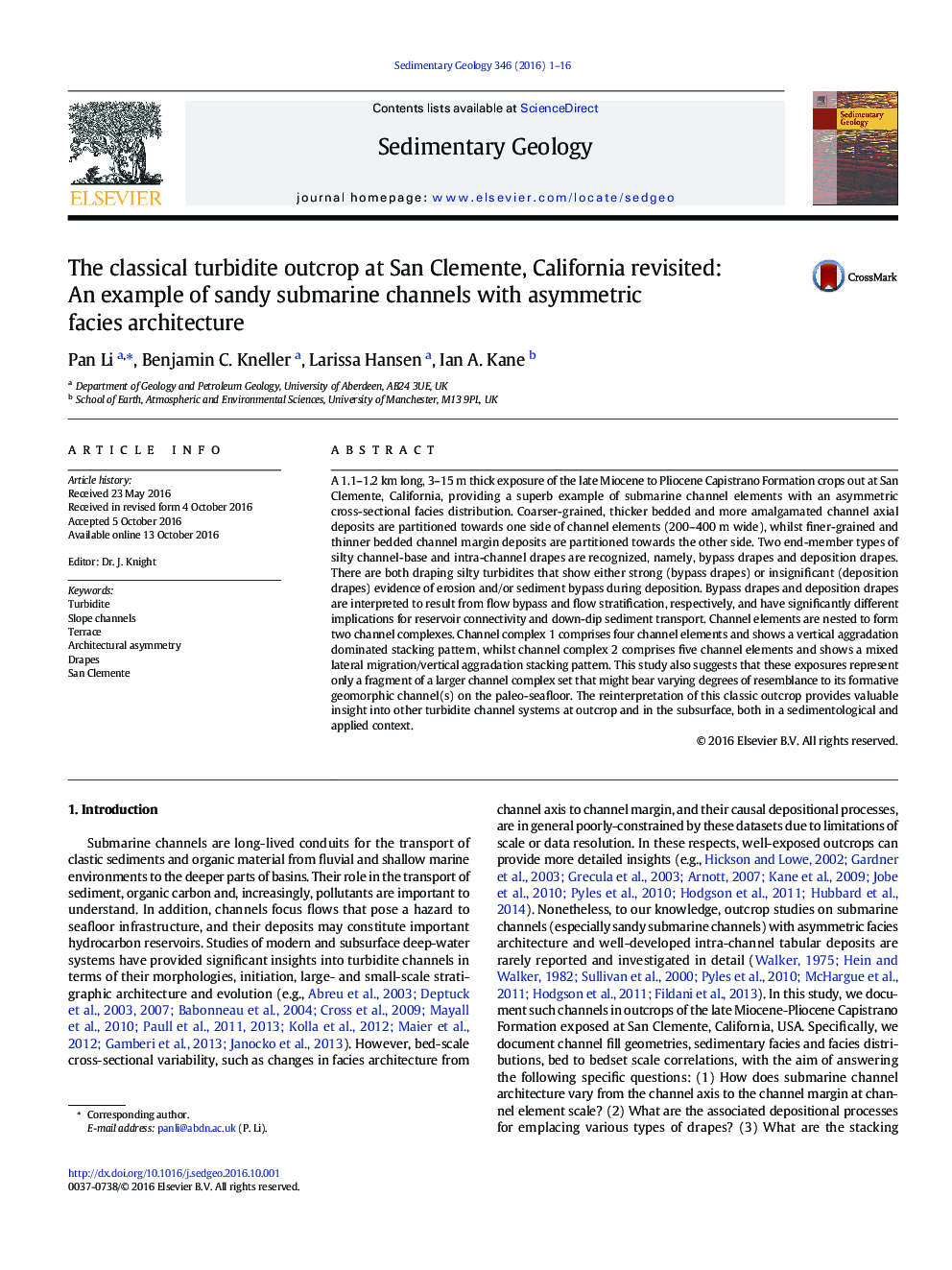| کد مقاله | کد نشریه | سال انتشار | مقاله انگلیسی | نسخه تمام متن |
|---|---|---|---|---|
| 4688886 | 1636017 | 2016 | 16 صفحه PDF | دانلود رایگان |
• Submarine channel-fills with facies architectural asymmetry and varying stacking patterns are documented.
• Two end-member types of drapes (bypass drapes vs. deposition drapes) are present in the channel fills.
• Bypass drapes and depositional drapes are characterized by different character, genesis and recognition criteria.
• This study presents new insights into submarine channel facies architecture which are applicable to hydrocarbon reservoirs.
A 1.1–1.2 km long, 3–15 m thick exposure of the late Miocene to Pliocene Capistrano Formation crops out at San Clemente, California, providing a superb example of submarine channel elements with an asymmetric cross-sectional facies distribution. Coarser-grained, thicker bedded and more amalgamated channel axial deposits are partitioned towards one side of channel elements (200–400 m wide), whilst finer-grained and thinner bedded channel margin deposits are partitioned towards the other side. Two end-member types of silty channel-base and intra-channel drapes are recognized, namely, bypass drapes and deposition drapes. There are both draping silty turbidites that show either strong (bypass drapes) or insignificant (deposition drapes) evidence of erosion and/or sediment bypass during deposition. Bypass drapes and deposition drapes are interpreted to result from flow bypass and flow stratification, respectively, and have significantly different implications for reservoir connectivity and down-dip sediment transport. Channel elements are nested to form two channel complexes. Channel complex 1 comprises four channel elements and shows a vertical aggradation dominated stacking pattern, whilst channel complex 2 comprises five channel elements and shows a mixed lateral migration/vertical aggradation stacking pattern. This study also suggests that these exposures represent only a fragment of a larger channel complex set that might bear varying degrees of resemblance to its formative geomorphic channel(s) on the paleo-seafloor. The reinterpretation of this classic outcrop provides valuable insight into other turbidite channel systems at outcrop and in the subsurface, both in a sedimentological and applied context.
Journal: Sedimentary Geology - Volume 346, December 2016, Pages 1–16
